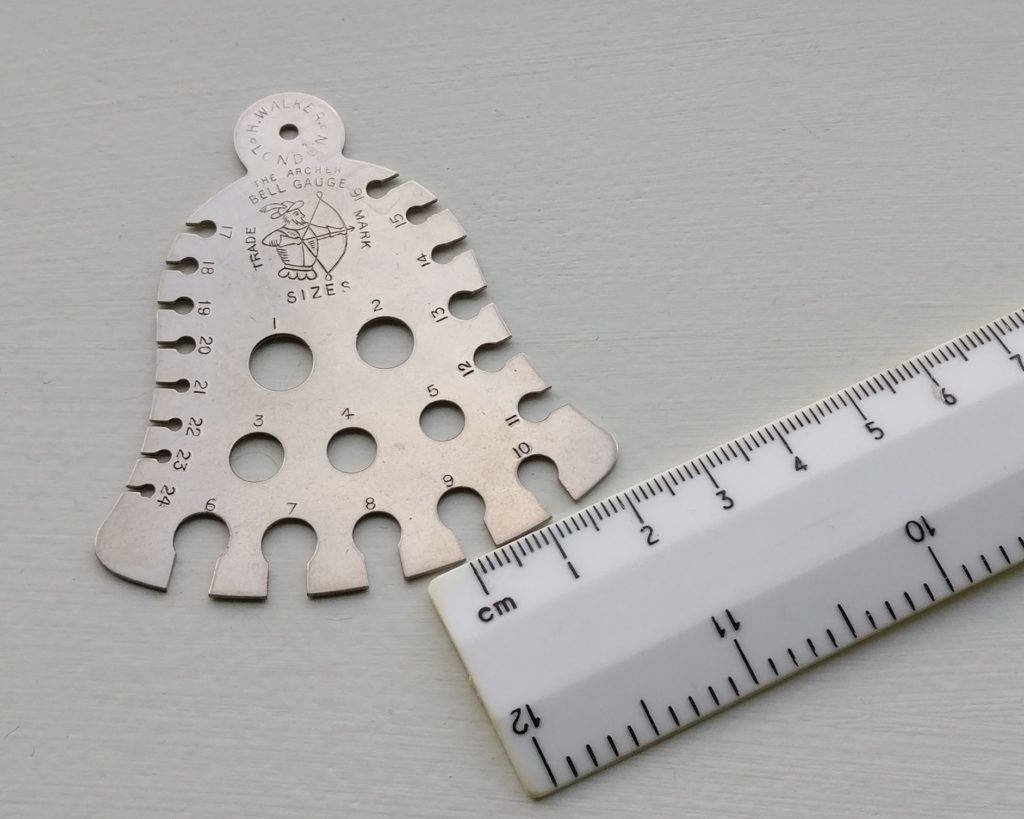A year ago I blogged about the knitting needle gauges I have in my collection that are shaped like bells. This week I was asked a question about why a size 9 hole in an old UK gauge looks as though it measures 5 or 6 mm when all the gauge conversion charts say size 9 is equivalent to 3.75 mm.
The answer is really quite simple but it is clear to see where the confusion arises.

This is an early twentieth century gauge made by H Walker but it is very similar to all other gauges of that era. There are minor discrepancies with a few gauges but, generally speaking, they are all fairly accurate.
The holes in the centre are exactly what you would expect to see. The largest is size 1, which is equal to a modern-day 7.5 mm. Size 2 is 7 mm. The confusion begins when you want to use the edge of the gauge.
Below is a conversion chart showing the metric equivalents of the UK sizes. (Some are missing because there is no easy metric equivalent.)

Looking at the smaller holes it becomes obvious that the holes are much bigger than the metric measurements. It is the slits that should be used to measure the needle.
The size 9 slit, shown by the ruler, is indeed 3.75 mm (or thereabouts). The only completely accurate way to measure the diameter of a needle is using scientific calipers.
Over time gauges changed and the problem was eliminated.
Hi. I have a Walkers bell gauge that has been handed down from my great great aunt, she was born in 1897. I have never been able to work how to use it until I read this. Much appreciated. Thank you.
❤
That solved the mystery, I was trying to work out what these sizes were and thought it was the holes. Thank you.